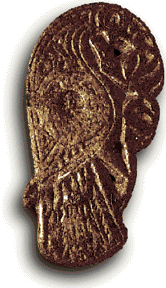
A Valkyrie is a female helping spirit of the god Odin. The modern image of the Valkyries as elegant, noble maidens bearing dead heroes to Valhalla is largely accurate for what it is, but a highly selective portrayal that exaggerates their pleasant qualities. To some extent, this tendency toward sanitization is present even in the later Old Norse sources, which focus on their love affairs with human men and their assisting Odin in transporting his favorites among those slain in battle to Valhalla, where they will fight by his side during Ragnarok.
As much as we know of the Valkyries from ancient text there is still much about them that are a mystery and an alluring one at that. So I felt the need to make this Blog post regarding them and provide you the reader the best resources I know of.
Sometimes the blood-covered Valkyrie-prophetesses are seen themselves as weavers, as in the poem Darraðarljóð where the valkyries appear to prophesy the outcome of the next day’s battle (describing the fall of Brian Boru to Viking forces at the Battle of Clontarf, 1014):
Blood rains from the cloudy web
On the broad loom of slaughter.
The web of man grey as armor
Is now being woven; the Valkyries
Will cross it with a crimson weft.
The warp is made of human entrails;
Human heads are used as heddle-weights;
The heddle rods are blood-wet spears;
The shafts are iron-bound and arrows are the shuttles.
With swords we will weave this web of battle.
The Valkyries go weaving with drawn swords,
Hild and Hjorthrimul, Sanngrid and Svipul.
Spears will shatter shields will splinter,
Swords will gnaw like wolves through armor.
Let us now wind the web of war
Which the young king once waged.
Let us advance and wade through the ranks,
Where friends of ours are exchanging blows.
Let us now wind the web of war
And then follow the king to battle
Gunn and Gondul can see there
The blood-spattered shields that guarded the king.
Let us now wind the web of war
Where the warrior banners are forging forward
Let his life not be taken;
Only the Valkyries can choose the slain.
Lands will be ruled by new peoples
Who once inhabited outlying headlands.
We pronounce a great king destined to die;
Now an earl is felled by spears.
The men of Ireland will suffer a grief
That will never grow old in the minds of men.
The web is now woven and the battlefield reddened;
The news of disaster will spread through lands.
It is horrible now to look around
As a blood-red cloud darkens the sky.
The heavens are stained with the blood of men,
As the Valyries sing their song.
We sang well victory songs
For the young king; hail to our singing!
Let him who listens to our Valkyrie song
Learn it well and tell it to others.
Let us ride our horses hard on bare backs,
With swords unsheathed away from here!
And then they tore the woven cloth from the loom and ripped it to pieces, each keeping the shred she held in her hands… The women mounted their horses and rode away, six to the south and six to the north.
Valkyries, Wish-Maidens, and Swan-Maid

The Powerful Valkyries as Icons of Female Force and Fear
Grímnismál: The Speech of the Masked One




